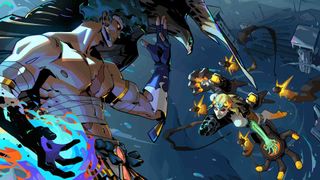Nintendo Switch
Explore Nintendo Switch
Latest about Nintendo Switch

Hades 2 lead says the best Early Access boons were reskinned: "It's important not to be too precious about these things"
By Ashley Bardhan published
News Familiar, but different

From Citizen Sleeper 2 to Hollow Knight: Silksong, the best sequels of 2025 expanded upon their predecessors
By Joe Chivers published
Year in Review Year in Review 2025 | The best sequels should be that much more than the original

Hades 2 has an epic script of over 400,000 words and 30,000 voice lines – around 50% more than the original roguelike
By Kaan Serin published
News Hades 2's creative director says it's "a game that can technically be played forever"

Warframe is set to break its all-time player count on Steam with latest The Old Peace update, soaring close to 180,000
By Willa Rowe published
News The twelve-year-old game shows no signs of slowing down

Disco Elysium devs built the RPG's visual style as a "cover band" for Obsidian's "great comeback game," Pillars of Eternity
By Dustin Bailey published
News "We were like, 'we should steal that'"

Pokemon Legends ZA Feebas location and evolution explained
By Joel Franey published
Guide Feebas evolves into Milotic in the Pokemon Legends ZA DLC when traded with a Prism Scale

All Pokemon Legends ZA Mega Evolutions
By Catherine Lewis last updated
Guide Here are all the Pokemon Legends ZA Megas, in both the DLC and the core game

The best cheap Nintendo Switch bundle deals - all the latest sales in December 2025
By Tabitha Baker last updated
Deals We're rounding up all the best Nintendo Switch bundle deals available right now, with all the latest sales in one place.
Weekly digests, tales from the communities you love, and more




